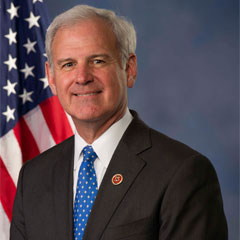
Alabama reached and passed the peak of COVID-19 new cases during the week of April 12. As I have written previously, this doesn’t mean we haven’t seen new cases since then because we have. Nor does it mean we won’t see new cases in the future because we will. It does mean that the number of new cases per day is beginning to gradually come down. This is the flattening of the curve you have heard so much about. We have been successful in achieving what we set out to do with state-ordered extreme social distancing.
Indeed, we have avoided the worst experiences of other places in the country, especially the New York metro area which has had the worst. Nearby New Orleans has also had it very badly. While over 200 Alabamians have died from the disease so far, and every one of those deaths is a tragedy, our “case fatality rate,” or the percentage of those testing positive who die, is 3.5 percent, better than the national rate of 5 percent, and much better than the international rate of 7 percent. Indeed, it is projected that deaths from the disease in Alabama will be less than a third of those from the flu.
Just as important, here in Alabama we didn’t come anywhere near exhausting our available hospital beds or ICU units. Our health care system, while stressed for personal protective equipment, or PPE, has been able to treat people without entering crisis mode. In part this is true because we suspended so-called “elective” procedures so that there would be beds and PPE if we had a feared breakout here.
We also escaped the worst because only around 9 percent of the 75,000 people tested so far in Alabama have been positive for the disease, half the national average of 18 percent. Moreover, only 13 percent of Alabamians testing positive required hospitalization, most of them not in ICU beds.
We still have much to learn about COVID-19. Because we have concentrated our tests on those most at risk, we have yet to test the broader population. We know many more have it, or had it, than we have tested. We also know a large percentage had mild or no symptoms. Some experts believe the percentage who have the disease without significant symptoms to be as high as 85 percent. Until we broaden testing, as we will continue to do in the weeks to come, we won’t know for sure. But, it’s a good sign that our COVID-19 deaths in Alabama this year are predicted to be less than those from the flu.
As we begin to reopen parts of the state shut down due to state-required extreme social distancing, we will have to test more and make sure our health providers have what they need when, not if, cases rise again, likely in the fall.
They will need more PPE. FEMA is helping with that by flying in more from overseas, and the President is using the Defense Production Act to produce PPE here in the US. They will need more financial help. In the CARES Act extension Congress passed last week, we provided an additional $75 billion for our health care system, especially our hospitals. We will also need to increase testing even more, so Congress added $25 billion for that.
The CARES Act extension increased funding for the small business PPP and EIDL programs by $310 billion and $50 billion respectively, in an effort to keep these businesses and their payrolls afloat until we slowly regain our economic footing. Unfortunately, both of those programs have hit roadblocks in providing the needed funding on a timely basis.
As I have said for some time now, the government cannot substitute for our private sector economy. The government just doesn’t have the means to do that, nor was it designed to do so. That is why bringing the economy back is the key to recovery and to bring it back we must gradually return to normal life. Some in the national news media try to pit our public health against our economic health. That’s a false choice because we can do both.
As I write this, we don’t know exactly when or how Governor Ivey will reopen our economy. But, when we start that process, we need to all remember that each of us have a role to play, by continuing good hygiene, avoiding groups of 10 or more, keeping six feet social distancing, and staying away from the most vulnerable to the disease so we don’t endanger them.
We’ve turned a page in the book of COVID-19 here in Alabama I don’t know about you but I’m ready for the next chapter.
